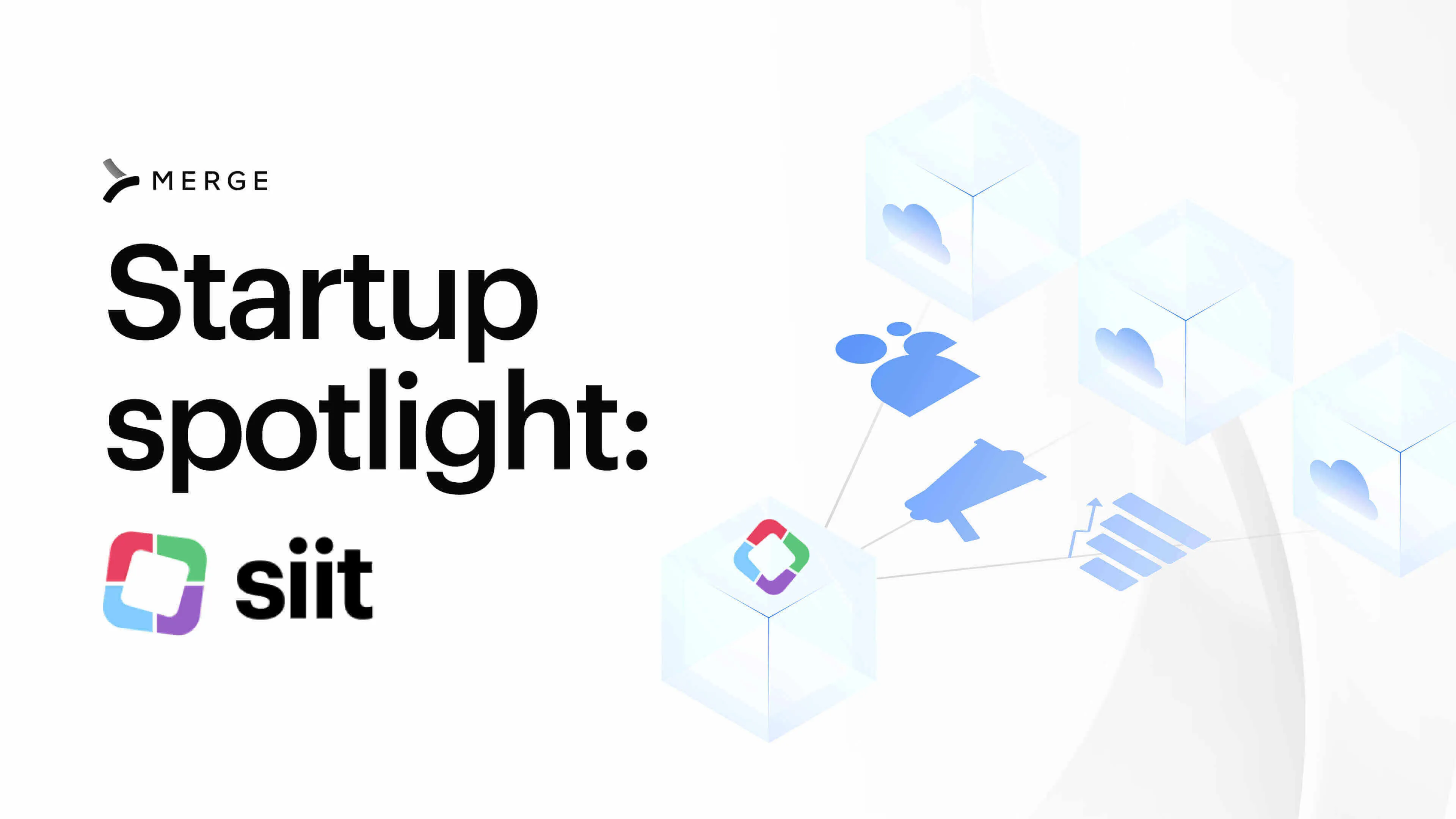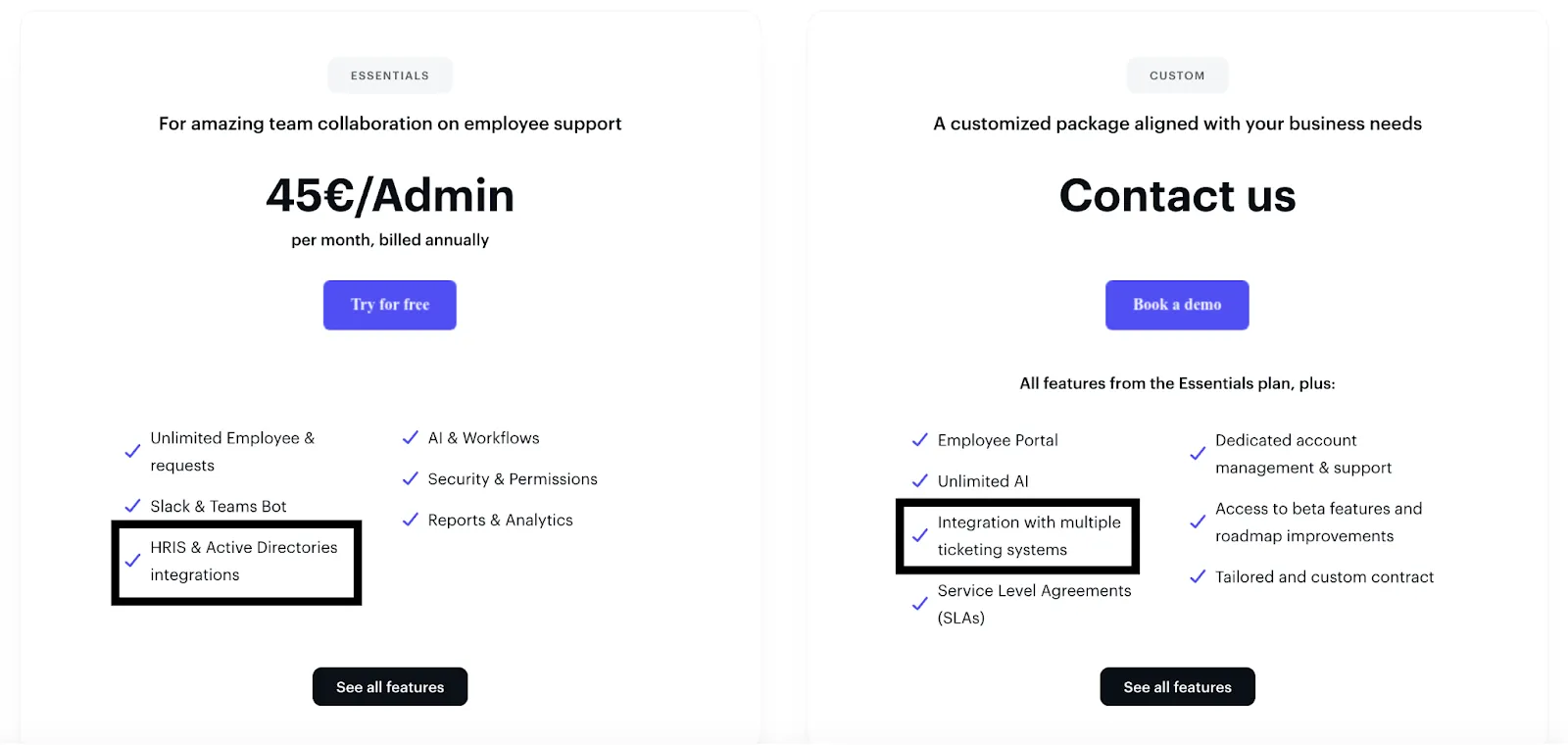How Siit markets, sells, and supports their product integrations

Welcome to another first edition of “startup spotlight”, a content series that gives you the inside scoop on how startups build, market, sell, and support their customer-facing integrations.
Today we’re highlighting Siit, an internal helpdesk software that allows HR and IT teams to manage employees’ requests.
You can read on to hear directly from Siit’s Co-Founder and CPO, Anthony Tobelaim. He’ll share why they needed integrations for their product, how they’ve gone about building them, how they market and price them, and more!
1. Why does Siit need integrations?
It helps to understand how our platform works at a high level: Employees can make all kinds of requests within the tools they already work in, such as Slack or Microsoft Teams, and our platform surfaces these requests to HR and IT, where they can prioritize and respond to each.
Given this workflow, we knew early on that it’d benefit us to integrate our product with the HRIS and ticketing tools our clients use.
HRIS integrations allow us to append additional employee information to a request, giving our users the context they need to respond quickly and effectively.

And our ticketing integrations let us sync cases bidirectionally between our platform and clients’ ticketing tools, all but ensuring that cases get discovered by the appropriate individuals and resolved with little delay.
2. Can you walk me through Siit’s journey in building integrations?
I knew from previous experience that building the integrations internally is extremely complicated and resource-intensive work. We also found that our clients were using a wide range of HRIS applications, so we’d have to build and maintain many integrations.
So, we quickly decided to outsource our integrations. And after evaluating a few options, we wanted to try Merge because they offered the most comprehensive set of HRIS integrations.
We entered into a proof of concept with Merge, and after implementing and testing out a few integrations, we knew the platform was the right long-term fit for our product.
We also found Merge’s support team to be incredibly responsive and helpful during the proof of concept, which was the icing on the cake.
3. How does Siit market its integrations?
We use a variety of channels.
For starters, we promote the integrations within our product and externally through integration marketplaces.
Our internal integration marketplace allows our users to access, browse, and activate any of our integrations relatively quickly; while our public integration marketplace offers the same benefits, only for prospects.

We also announce all of our newly-launched integrations in our monthly newsletter in the hopes that some of the clients and prospects in the email list use those tools and can benefit from the integrations.

Finally, we announce newly-launched integrations across our social channels, which include X, Linkedin, Facebook, and Instagram.
4. How does Siit sell its integrations?
Our HRIS integrations come included with our product. Reason being, our platform depends on these integrations to function effectively. However, since larger companies typically use enterprise-grade ticketing systems to manage requests, they’ll also be more likely to need ticketing integrations—which lead us to include them in our higher-tier, custom plans.

In terms of introducing and promoting our integrations during the sales cycle, we typically have an initial qualification call with prospects, and as part of the call we’ll learn which HRIS and ticketing applications the prospect uses. The sales rep can then demo the integration with the application(s) the prospect uses, which can include everything from setting up the integration to showing off how quickly the data can move in a given sync.
5. How does Siit support its integrations?
Merge’s Integration Observability tooling is easy for anyone to use—including our customer success managers.
Our customer success managers check for integration issues themselves, diagnose each, and pinpoint the appropriate solution—all without leaving Merge. They then share this information with the affected client on time so that the client is kept fully informed and sees that we’re on top of it.
All the while, we’ll quickly present all this information to the engineering team, who can validate the proposed solution. The engineering team can go on to implement the solution or, in case the client needs to implement the fix (e.g., expired API key), a customer success manager would pass along the proposed solution to the client.
Learn how Merge can help you scale your product integrations by scheduling a demo with one of our integration experts.








.png)
.png)
